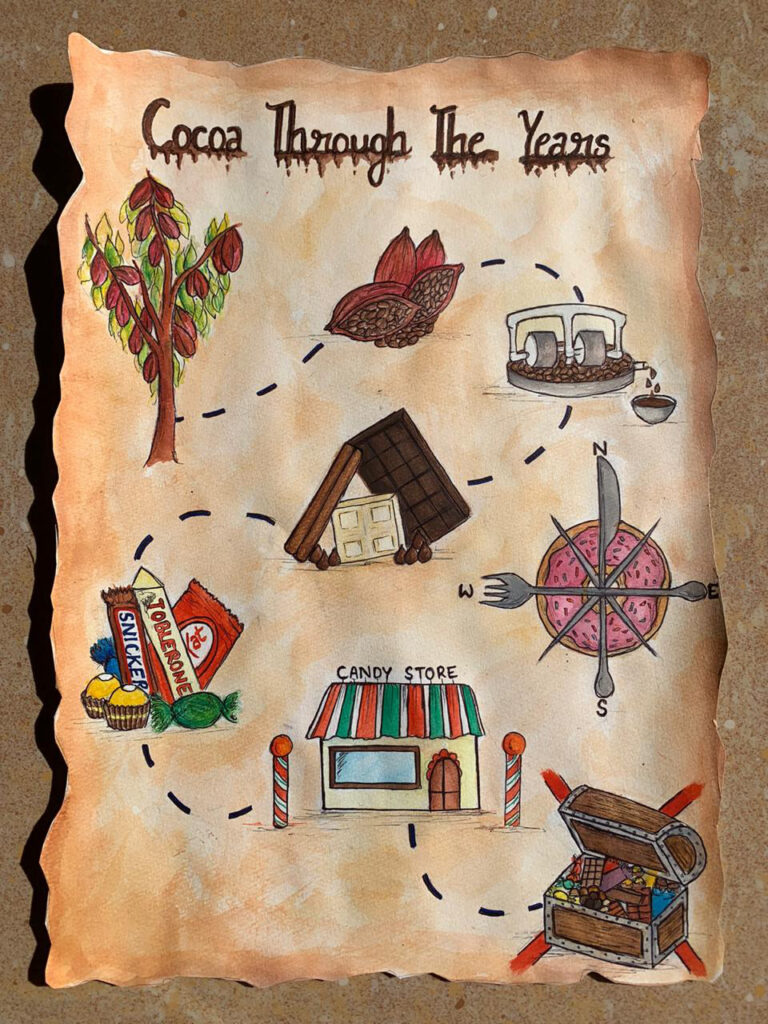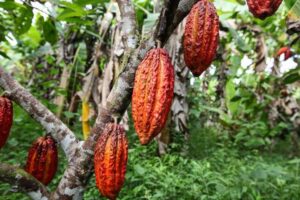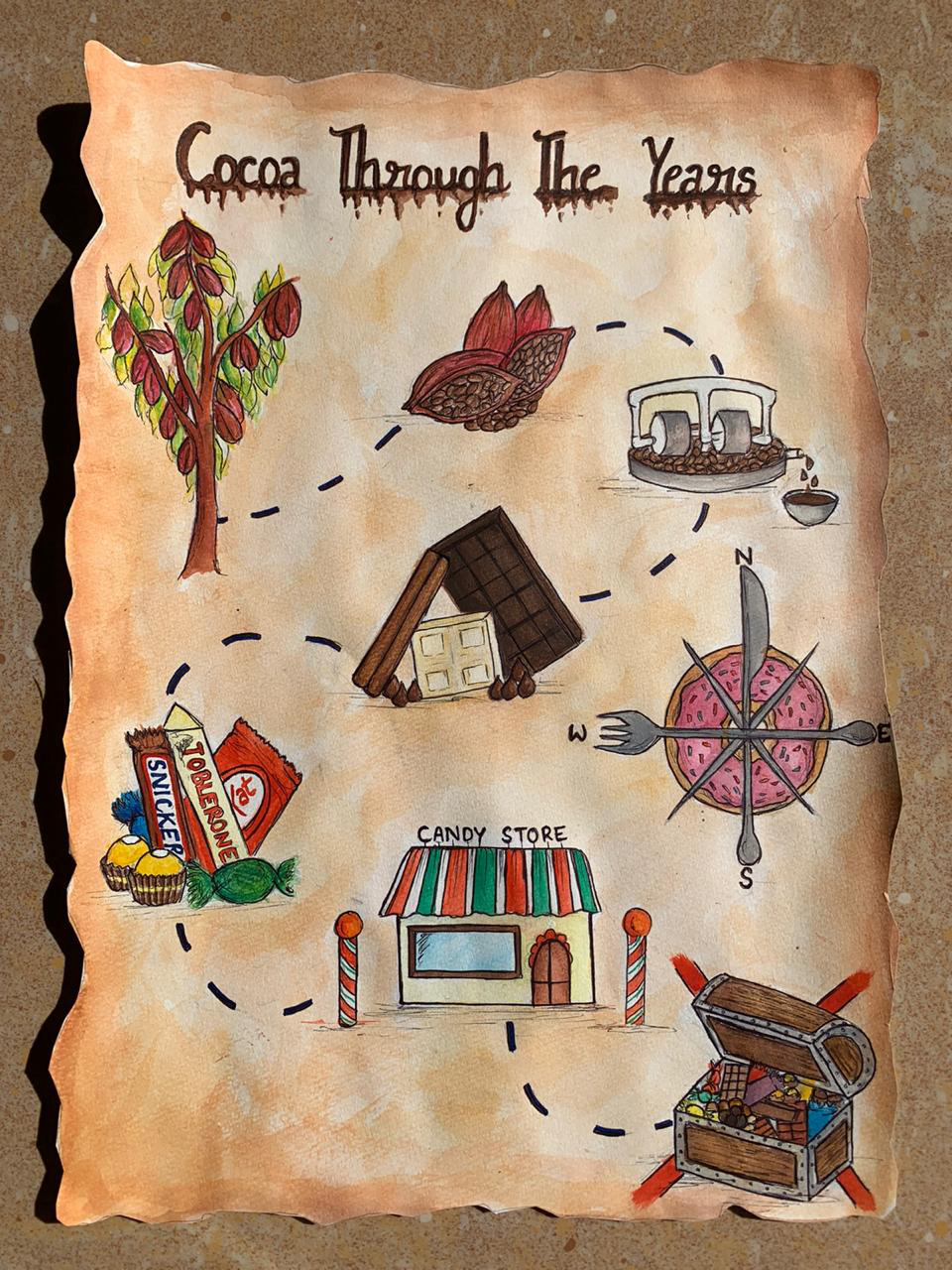
Everyone loves chocolate. There’s no denying it. Even people who like vanilla ice cream eat it with chocolate sauce. There’s no getting away from this universal love language. From the melt in your mouth Lindor chocolate spheres by Lindt, all the way down to the coin worth eclairs, there’s something for everyone’s tastes. Then again, if you like it all as so many of us do, then there’s no better season like the winter season. Warm gooey cakes, hot chocolate drinks with marshmallows—oh boy it doesn’t end.
Chocolate has been around for far longer than just this festival season. Describing the existence of such a delicacy using one season would be criminal. To give an idea of how long chocolate has been around for— traces of stimulants found in chocolates were discovered in utensils from 3500 years ago.

It is a well-known fact that these traditional winter desserts have existed for millennia. Deeply rooted in South America due to its favourable climate, the cacao trees were the earliest chocolate source. With the growth in demand over the centuries, plantations were started across the world. The process was reasonably straightforward—cacao trees would bear fruits, whose seeds would be harvested, and then later fermented to unlock the flavours of chocolate from within the seeds.
Quite a few uses of chocolates that we see in drinks, originated longer ago than we think. The Mayans used hot chocolate to celebrate occasions. They marked significant transactions with chocolate drinks as well.
Chocolate was so revered for the Aztecs that they used the beans as a currency. Imagine buying groceries with chocolate bars in these times. The spread of chocolate to Europe from the Americas was when the chocolate boom began. Several countries indulged in the pleasures of chocolate and had their variations by the 1600s. It was used to mark occasions and used in all kinds of beverages, yet it was only meant for the upperclassmen.

However, these things changed with the invention of the chocolate bar in the 19th century. Thanks to the advent of technology, the cacao beans after fermentation were further roasted in ovens to extract more flavour. The now brittle beans would go into a winnowing machine that would extract the nibs from the beans’ hull. These nibs are what ultimately would be ground into chocolate liquor using rollers. Contrary to what the name suggested, it did not contain any actual alcohol. It was the purest form of unsweetened baking chocolate. The first chocolate bar was produced by Fry’s Chocolate in 1847. This is where the chocolate we see today, came into being, available to all. Further accessibility to chocolate skyrocketed its commercial production in the 20th century. Everyone experimented with chocolate in their ways and gave birth to all the everyday uses of chocolate that we see around us.
Chocolate has become so popularised, it is safe to assume that a form of chocolate exists as an answer to every question. Chocolate reigns supreme as the most popular cake and ice cream flavour. From a comforting cup of hot chocolate on a winter evening to a refreshing milkshake on a summer afternoon. The roast chicken and cranberry sauce still cannot upstage Swedish Chocolate Cake and Chocolate Bread Pudding at Christmas dinners even today. Invariably making its way as a part of pizza toppings, chocolate has infiltrated all parts of the food world, and it’s here to stay.

However, what’s alarming is that chocolate, the healer of many wounds and the joiner of many hearts, could quite possibly go extinct in the next 40 years. Some say that in 20 years, chocolate will be like caviar. It will become so rare and so expensive that the average person won’t be able to afford it. Cocoa prices have been on the rise for the past six years. Why is this happening, though?
The problem is that cacao plants are quite sensitive. They can only grow in very specific rainforest-esque conditions. These conditions only exist 10 degrees North and South of the equator. As of now, Ghana and the Ivory Coast in West Africa are the leading producers of cocoa, accounting for more than 50 per cent of the world’s cocoa production. Thus, a substantial chunk of the world’s chocolate supply remains vulnerable to climate change. Moreover, cacao plants seem to be increasingly becoming victims of fungal diseases.
Luckily for us, all doesn’t seem to be lost yet. Similar to the thawing conditions of the polar ice caps, scientists have studied the melting situations of chocolate as well. With the keen interest and involvement of Hershey and Mars (the chocolate company, not the planet), scientists have recently mapped the cacao genome. Hopefully, these research practices will help create more resilient plants that can withstand fungal disease and grow in less sensitive environments. CRISPR techniques are being used right now to possibly create genetically modified cacao plants. However, CRISPR itself is relatively new, so it is difficult to say how effective these techniques may be.
Forty years is quite a long time though, and humans (at least the super smart ones) will probably figure out a way to make one of the greatest joys of human life (not an exaggeration at all) remain accessible. It’s going to be tough impersonating Forrest Gump to our kids without them actually knowing what a box of chocolates is. Climate change is already affecting all other aspects of food supply, so it would make sense that chocolate is not safe either. We have time though, and hopefully, we’ll figure something out by then, because next time a movie night with a comically large bar of chocolate is in order—mayonnaise probably will not cut it.
Sources: taste.com, History, LiveScience, Business Insider, Forbes, Science Alert,
Image Sources in order: Treehugger, Euronews, Cleobuttera
Written by Gautam Marathe and Rajika Ghose for MTTN
Featured artwork by Navya Anil for MTTN

Leave a Reply
You must be logged in to post a comment.